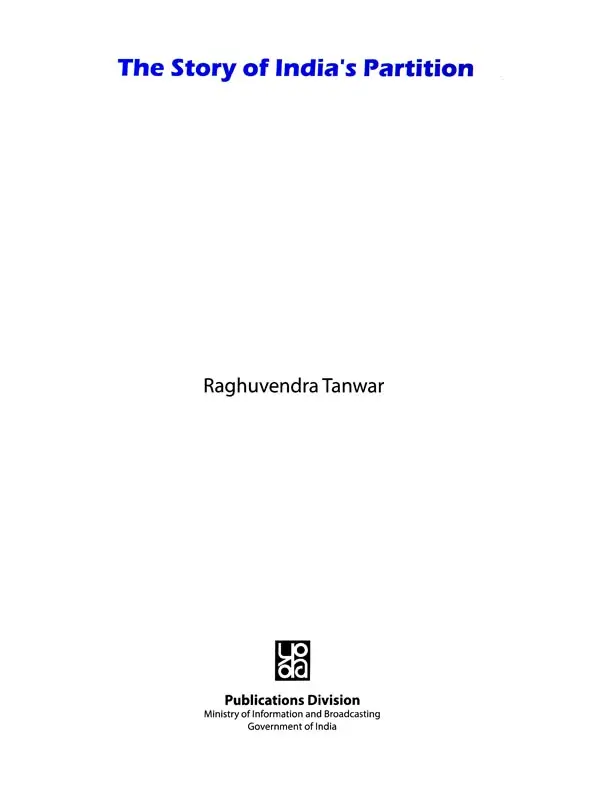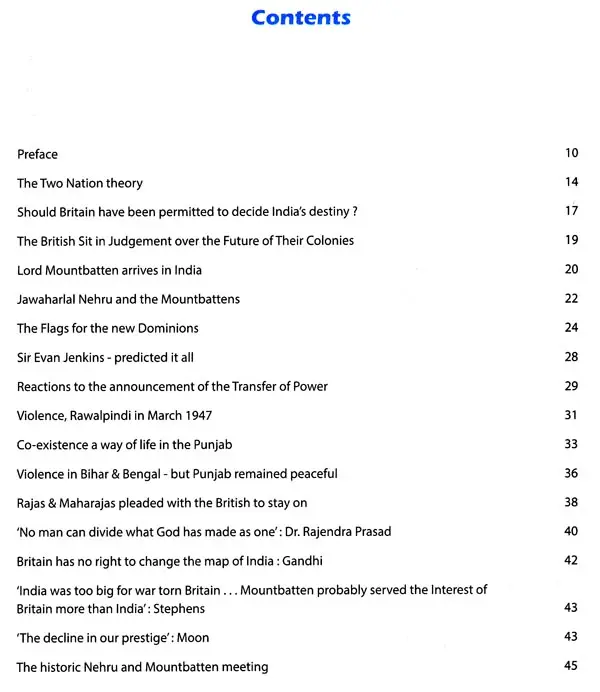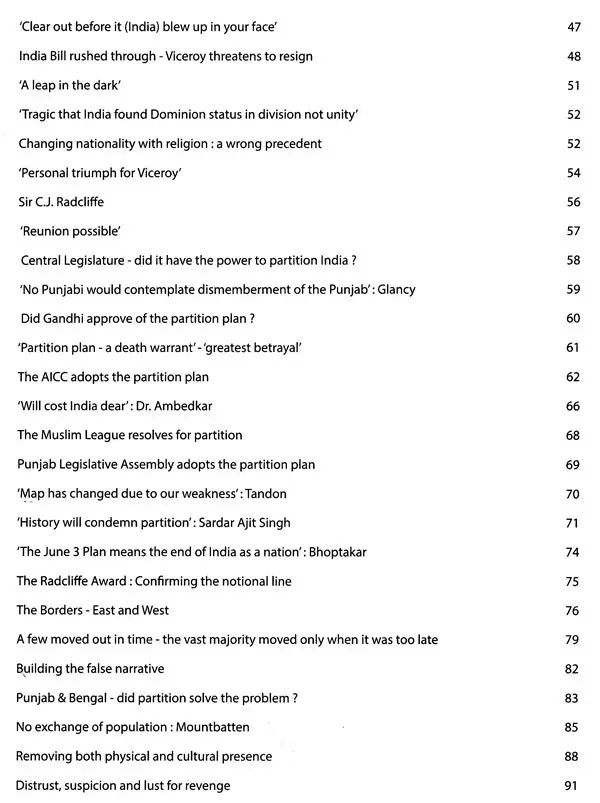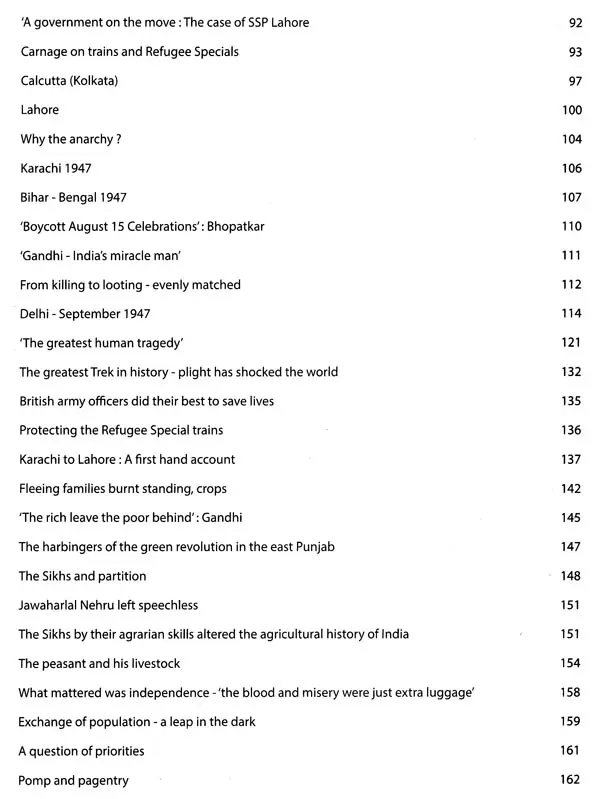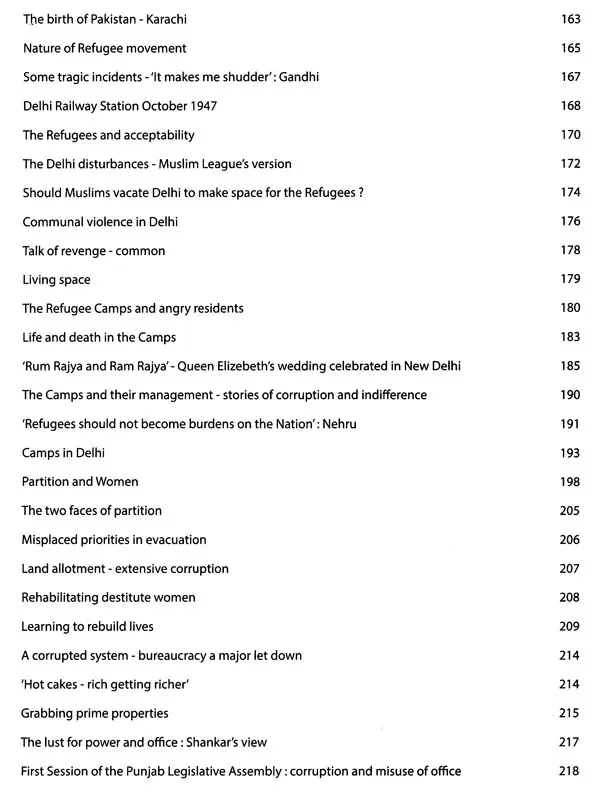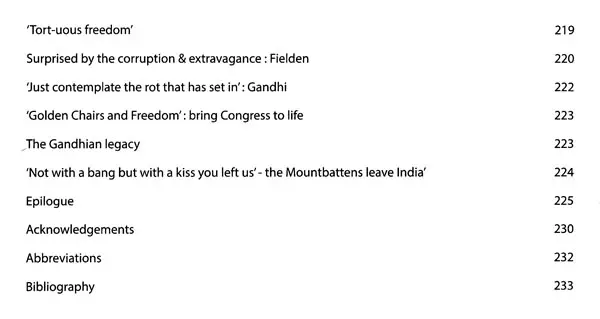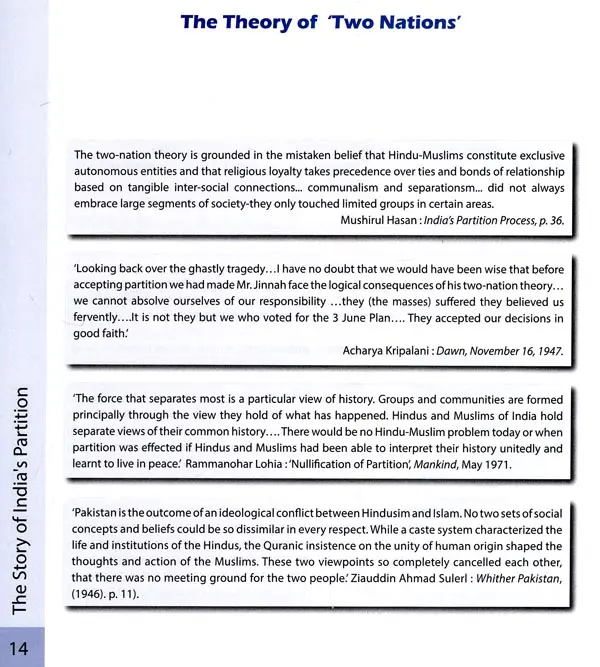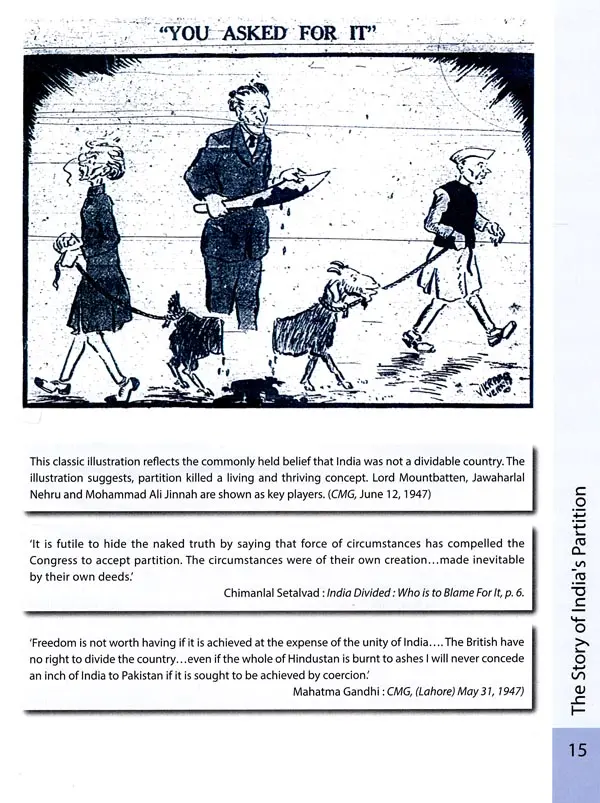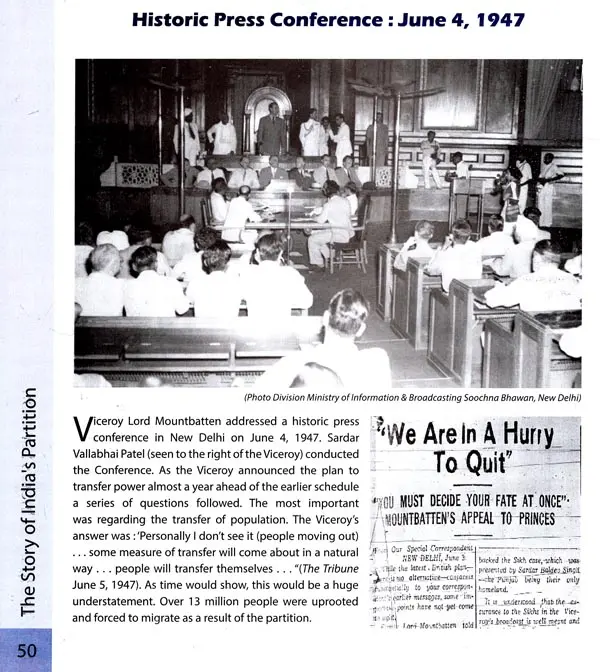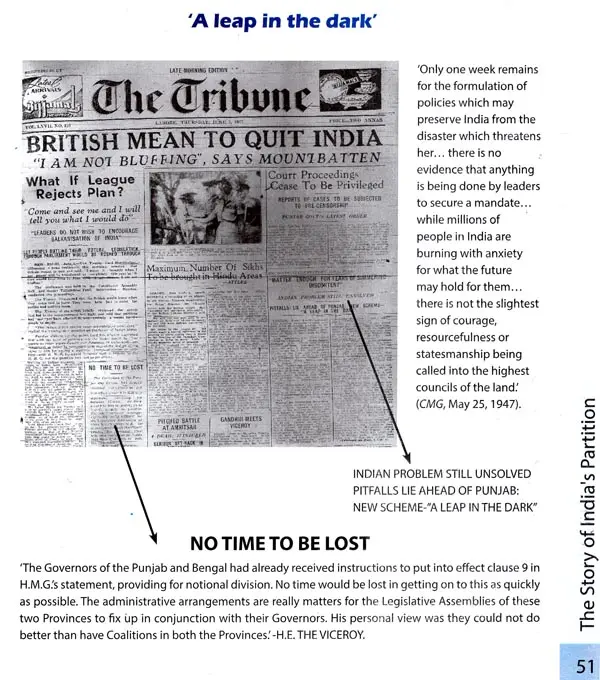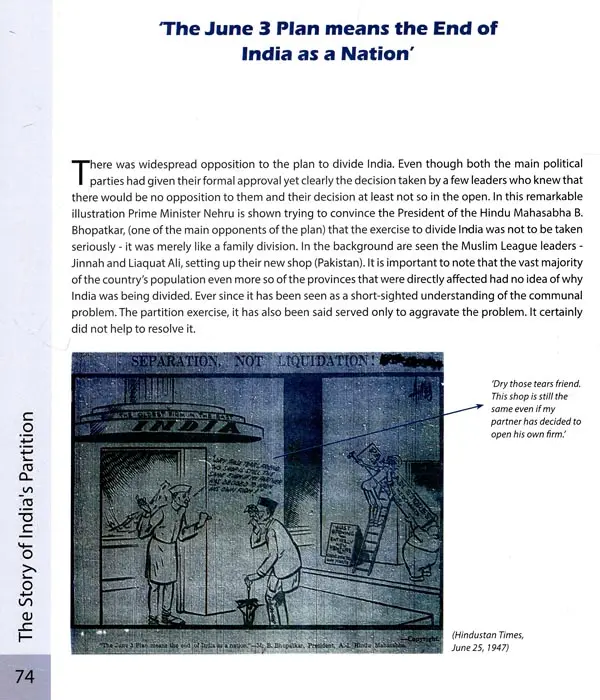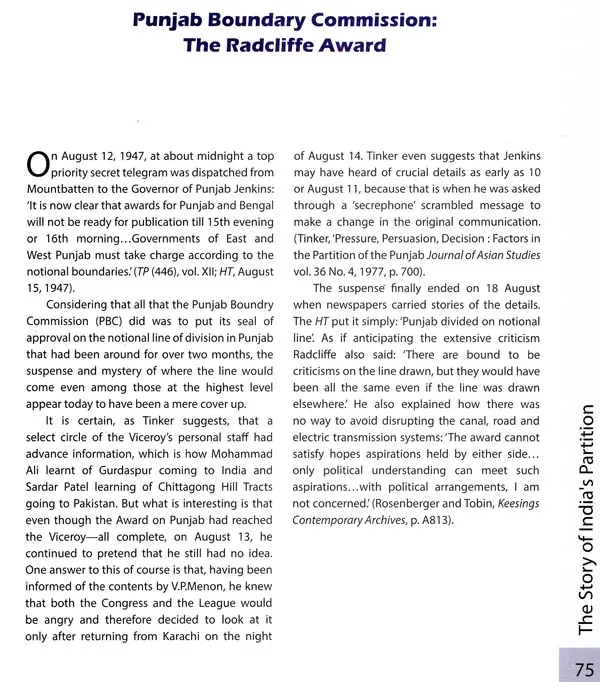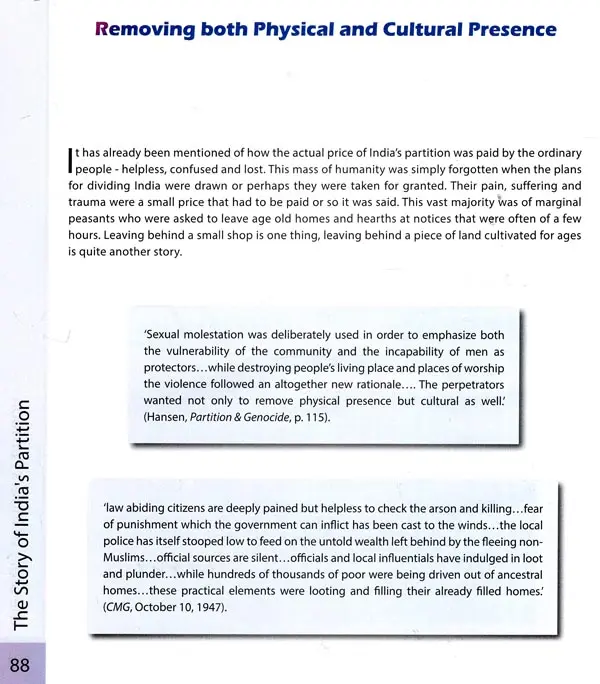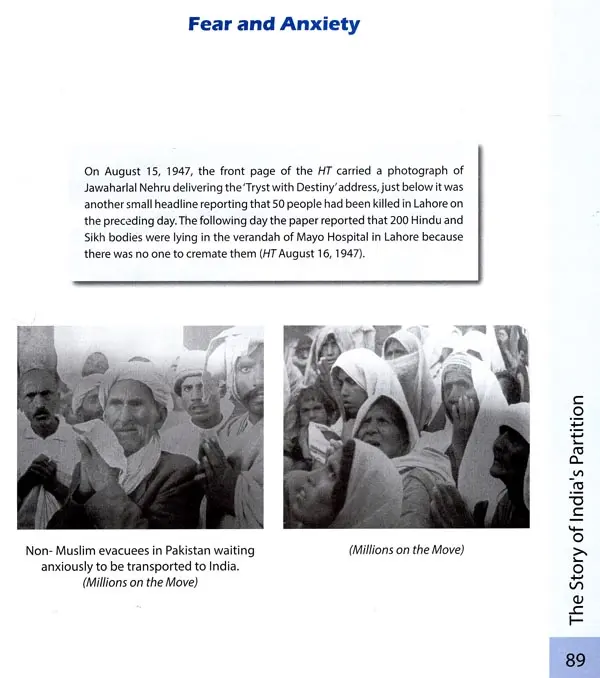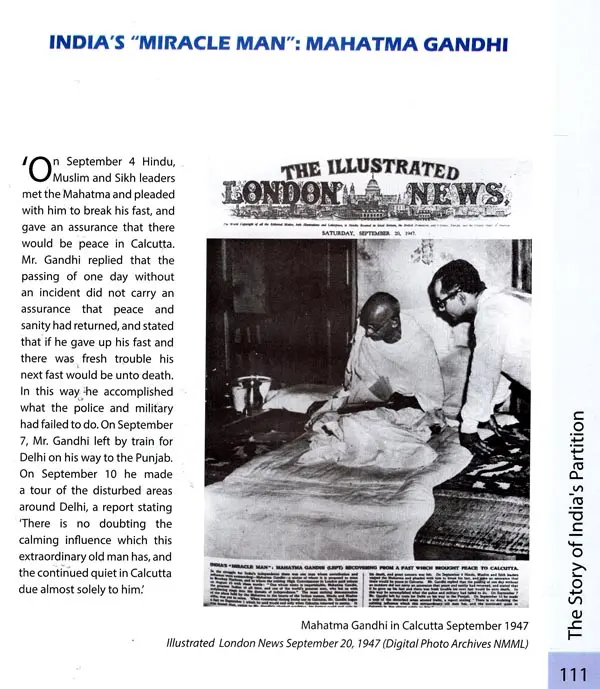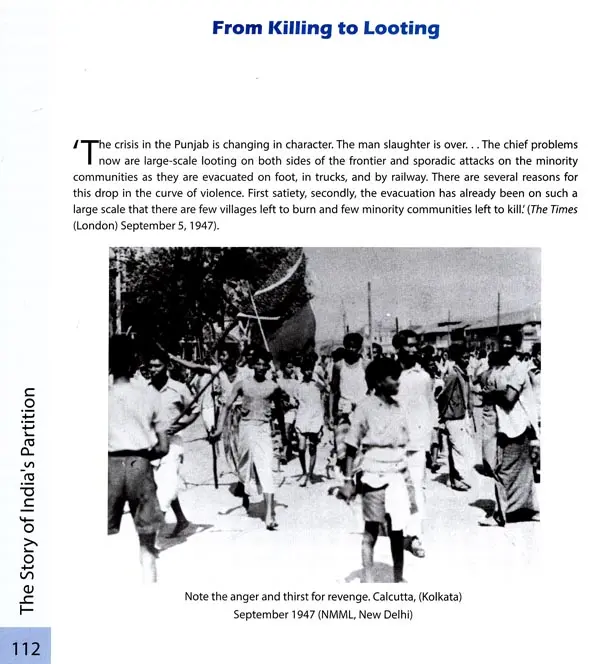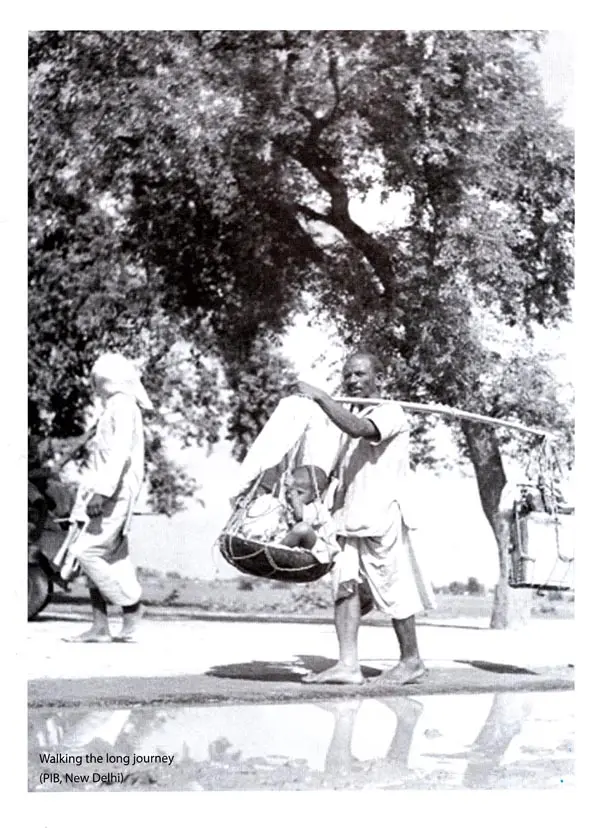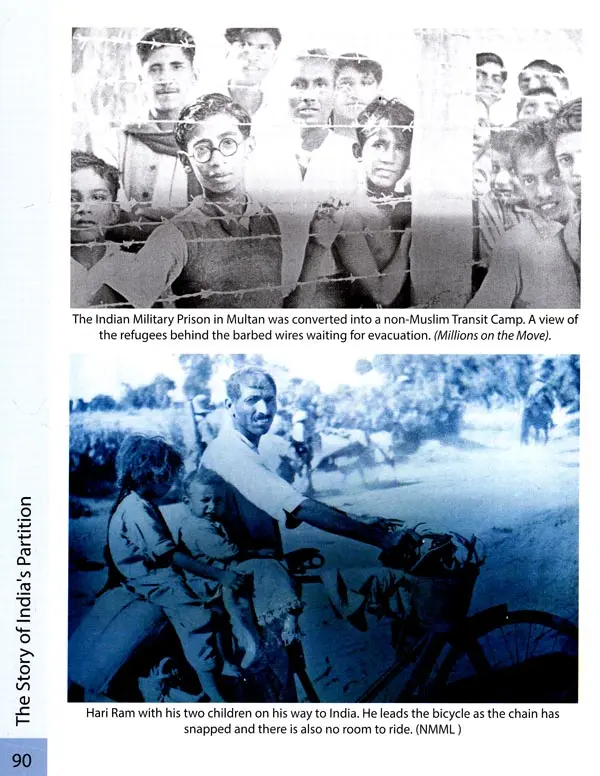
The Story of India's Partition
Book Specification
| Item Code: | UBB273 |
| Author: | Raghuvendra Tanwar |
| Publisher: | Publication Division of Ministry of Information and Broadcasting |
| Language: | English |
| Edition: | 2022 |
| ISBN: | 9789354095627 |
| Pages: | 236 (Color Illustrations) |
| Cover: | HARDCOVER |
| Other Details | 11.50 X 9.00 inch |
| Weight | 1.05 kg |
Book Description
India's partition, that came in the wake of Independence from British rule, is a story of unprecedented anarchy, forced migration of millions of families, barbaric communal violence,death and destruction. This volume seeks to revisit the past and refresh our memory through rare photographs, illustrations and detailed notes. Even as it underlines the point that the past can be an eye-opener it also emphasises on the resolve to move forward.
Being brought out in the 75 year of India's Independence the volume would be of interest to both the common reader and the subject specialist.
The partition of India in its most basic form is a story of unprecedented human displacement and forced migration. It is a story in which millions sought new homes in environments that were alien and resistive. More than being a story of a violent divide based on faith and religion it is also a story of how a way of life and ages of coexistence came to a sudden and dramatic end. For most people even remotely connected with the partition of India, memories and common perceptions not surprisingly are usually linked to death and destruction. Not surprisingly in the huge volume of literature that is available on partition, the references to lives of ordinary people being disrupted by communal strife to the extent that one or the other of the communities had to leave an area because the dominant group would not allow them to live in the area, are few and scarce, if at all.
In the three key provinces impacted by the events of the partition of India - Punjab, Bengal and Sind there were Hindu, Sikh and Muslim villages, and all the three communities were known to exist in some number in all the villages that may have had another majority community. In Bengal, of course, the Sikhs had virtually no presence. In Sind the number of Sikhs too was only nominal. But most importantly religion had never interfered in any major manner in social relations. The underlying influences of geographical unity, historical and cultural influences had wielded a fairly homogenous social fabric which went back to over a thousand years. A divide based on religion may or may not have existed, but the answer that was provided had come with a belief that the partition of India was the only course to reduce communal passions. This remedy of dividing the communities, rather than douse the flame fanned it further.
What results did the decision to divide the country yield. About 6 million non-Muslims moved out from what had become West Pakistan and another 6.5 million Muslims moved out from the Indian part of Punjab, Delhi, etc., into West Pakistan. In the east an estimated 2 million Non-Muslims moved out of East Bengal (Pakistan) and later in 1950 another 2 million Non-Muslims moved into West (India) Bengal. It is estimated that about one million Muslims had moved out of West Bengal. (Vakil, Economic Consequences of Divided India (1950) p. 25).
Never before in the history of mankind had such a large scale transfer of population taken place under such adverse conditions and in such a short span of time. The estimate of those killed has varied from as little as 30,000 to over 700,000. The generally accepted figure stands at around 500,000. In terms of the financial impact, Vakil, goes by the figure of about, Rs. 1400 crores-the amount of loss that was calculated as a claim made by impacted families to the government of India. In today's terms this would be in excess of rupees 2.5 lakh crores.
**Contents and Sample Pages**
